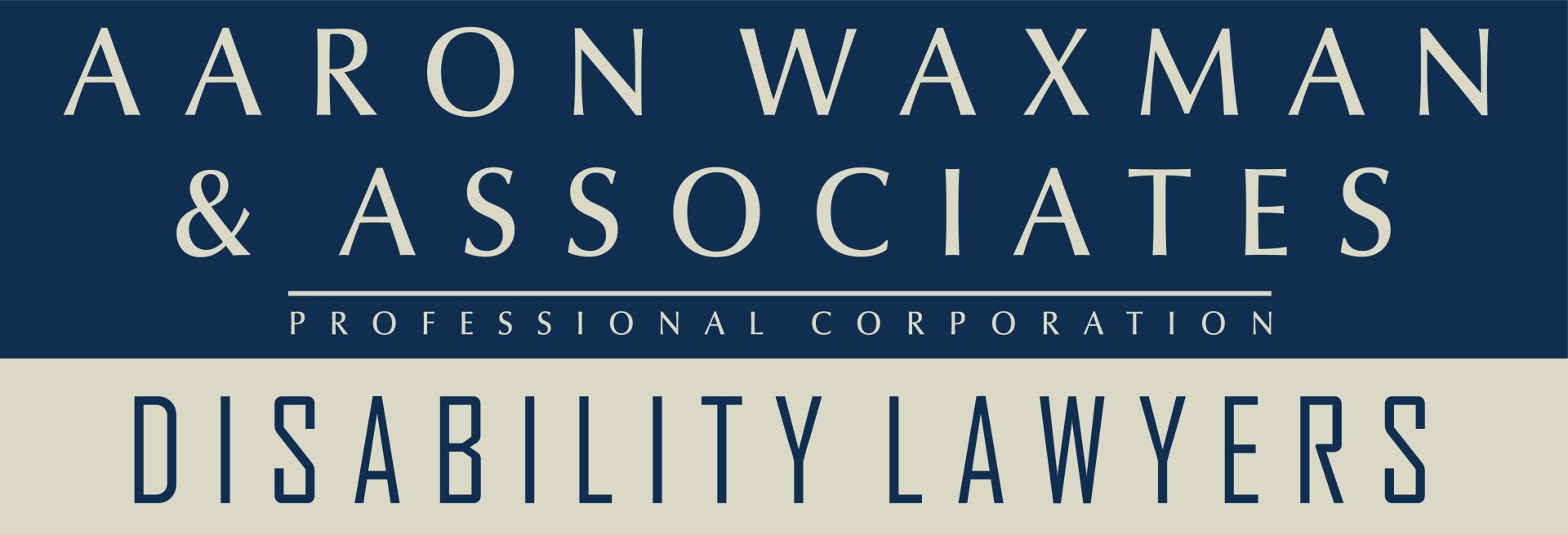Diabetes and LTD Claims: What You Need To Know
The month of November is Diabetes Awareness Month and November 14, 2022 is World Diabetes Day. This is significant as it speaks to the impact Diabetes has worldwide and in Canada.
Topics covered in this blog will include:
- What is Diabetes?
- Important Facts/Statistics
- How Diabetes Might Affect Your Ability to Work
- What to Know When Making A Claim for Short-Term or Long-Term Disability Benefits
- Reasons an Insurance Company Might Deny Your Claim
There are two main types of diabetes mellitus
Type 1 Diabetes
Type 1 diabetes occurs when the pancreas releases little to no insulin and the immune system attacks the cells that would process insulin, causing sugar to build up in the bloodstream instead of being used as energy. Type 1 diabetes usually develops in childhood/adolescence and is less common and is always treated with insulin.
Type 2 Diabetes
Type 2 diabetes, which usually develops as an adult and is more common, occurs when the body can’t properly use the insulin released or does not produce enough insulin. As with type 1 diabetes, what happens is sugar will build up in the blood instead of being used up as energy.
Unlike type 1 diabetes, type 2 diabetes does not always require insulin and medications if it has not reached a certain level of severity, can be treated with diet and exercise.
Gestational Diabetes
Gestational diabetes is another type of diabetes, that affects pregnant women. It occurs during the 2nd or 3rd trimester of pregnancy. It occurs as a result of the body not being able to produce enough insulin to handle the effects of changing hormone levels and the growth of a baby at the same time.
Between 3-20% of pregnant women develop gestational diabetes and in most cases they did not have diabetes before their pregnancy. Usually the diabetes goes away after giving birth.
Doctors typically check for gestational diabetes through a blood test 24-48 weeks into pregnancy.
Important Facts & Statistics
These facts and statistics shed some light on the impact diabetes has worldwide.
According to the International Diabetes Federation Diabetes Atlas
- 1 in 11 adults (aged 20-79 years) have diabetes, which totals 463 millions people
- By the year 2030, the number of people with diabetes is expected to rise to 522 million
- 3 out of 4 people diagnosed with diabetes live in low- and middle-income countries
- 1 out of 2 people with diabetes remain undiagnosed (this equates to 232 million people)
- Diabetes is a leading cause of heart disease, stroke, blindness, kidney failure and lower limb amputation
- Diabetes cause 4.2 million deaths in 2019
- 80% of type 2 diabetes are preventable through healthy lifestyle
According to Diabetes Canada
- There are 11 million Canadians living with diabetes or pre-diabetes;
- Every 3 minutes, someone in Canada is diagnosed with diabetes.
According to the Government of Canada website
A 20 year diabetes surveillance study was conducted between 2009 and 2019 and found the following:
- Between 2000 to 2016 the proportion of Canadians living with diabetes increased by an average of 3.3.% per year
- There are 3.2 million Canadians are living with diabetes
- 1 in 9 adults (aged 20 and older) live with diabetes
- On average, 549 Canadians are diagnosed with diabetes every day (approx. 201,000 new cases each year)
- Among Canadian adults (20 years +), 6.1% have pre-diabetes
- Diabetes is more common among adult men than adult women
- Women who develop gestational diabetes are at risk for developing type 2 diabetes later in life
Complications of Diabetes
Different complications can arise from having diabetes, for various reasons and these complications may make it difficult to continue working, either at a physical type of job or a sedentary type of job.
These include:
- Anxiety
- Depression
- Celiac Disease
- Eating Disorders
- Diabetic Retinopathy (can lead to blindness)
- Heart Disease
- High Blood Pressure
- Chronic Kidney Disease
- Diabetic Ketoacidosis
- Stroke
- Erectile Dysfunction
- Diabetic Peripheral Neuropathy
- Foot Problems (i.e. ulcers, infections, lead to amputations, osteomyelitis)
The complications that arise from diabetes can cause functional limitations and restrictions and significantly impact a your ability to perform daily activities including the essential duties of employment from a physical and psychological perspective.
Diabetes and Disability Claims
The application package for short-term disability and long-term disability benefits both contain an Employee Statement, an Attending Physician Statement and an Employer Statement.
The Employee Statement
When applying for disability benefits, it is important that you outline the ways that your condition affects all aspects of your life on this form. You have the opportunity to describe the onset of your symptoms, how they impact your daily live and your ability to work and overall functioning. You are able to provide information about your treatment providers/specialists and any treatment you are attending.
The Attending Physician Statement
This form should be completed by the doctor who can best explain your condition to the insurance company. On this form, it is important that your doctor explain the nature of your condition and any complications that it causes. Your doctor should specify the nature of your condition, your diagnosis, your symptoms and any findings on examination/testing. Your doctor should also be specific when detailing your restrictions and limitations and how they relate to your own occupation and occupations you may be suited for.
Provide Clear Examples
On both the Employee Statement and Attending Physician Statement, clear examples of how your illness/condition affects your life and activities of daily living should be given.
For example:
- If you work in a physical- labour type position and experience peripheral neuropathy (numbness in the legs or feet) or other types of foot problems, your limitations and restrictions could be difficulty walking, driving, or standing for long periods of time.
- If you work in a sedentary type position, say working at a computer most of the day, and experience anxiety, depression, retinopathy or other eye issues your limitations and restrictions might be difficulty focusing and concentrating, difficulty seeing and focusing on the computer screen, or difficulty interacting with others.
Submit Supportive Medical Evidence
Medical information that could be submitted with your application or in support of your claim could include bloodwork, x-rays that show if any deterioration has occurred, consultation reports from any specialists seen, hospital records and records from any dietician or diabetes education centre.
Seek Treatment
As with any condition, the insurance company is looking to see if you are seeking appropriate treatment from the proper specialists or treatment providers (i.e. endocrinologist, internal medicine specialist, diabetes education centre). As well, the insurance company is looking for evidence that you seek regular treatment, on an ongoing basis.
Employer Statement
Your employer is required to complete an Employer Statement (also referred to as a Plan Sponsor Statement) which provides details such as your date of hire, last date worked and salary. Your employer can also provide details such as any observations made concerning your ability to do your job (i.e. the date when you were you no longer able to perform your job duties as of a certain date) or if you required modified duties or accommodations (of if they are available).
Reasons Your Claim Might Be Denied
There are many reasons as to why your insurance company might decide to deny your claim for short-term or long-term disability benefits.
A few common examples are:
- Your insurer does not feel that you are seeking treatment on a regular basis or are receiving appropriate treatment;
- You are not under the care of an appropriate specialist in the opinion of the insurer;
- Lack of objective medical evidence to support the severity of your symptoms;
- There are no medically supported restrictions or limitations;
- You can work in a sedentary position (if your own job was physical), or if your position was sedentary, you should be able to continue working in such a capacity;
If your claim has been denied at any stage, be it from the outset, while you’re on claim or at the change of definition, you can fight the insurer’s decision. You are not limited to the insurer’s internal appeal process as you have the option to start a lawsuit against them.
You should be sure to speak with a lawyer who is well-versed in short-term/long-term disability matters to find out what your rights and obligations are as an insured person and to make sure you do not miss any limitation periods.
Our law firm offers a free initial consultation and our lawyers have helped many clients who have made disability claims related to diabetes and whose claims have been denied by their insurance companies.
We offer a free initial consultation that can be arranged at a date and time of your choosing and at your convenience.
Recent posts from our Knowledge Centre
- This blog is for informational purposes only and is not meant to substitute legal advice. Please read our disclaimer for further information.
- All of our lawyers are licensed by The Law Society of Upper Canada
- Office in Toronto and able to represent people in the province of Ontario








